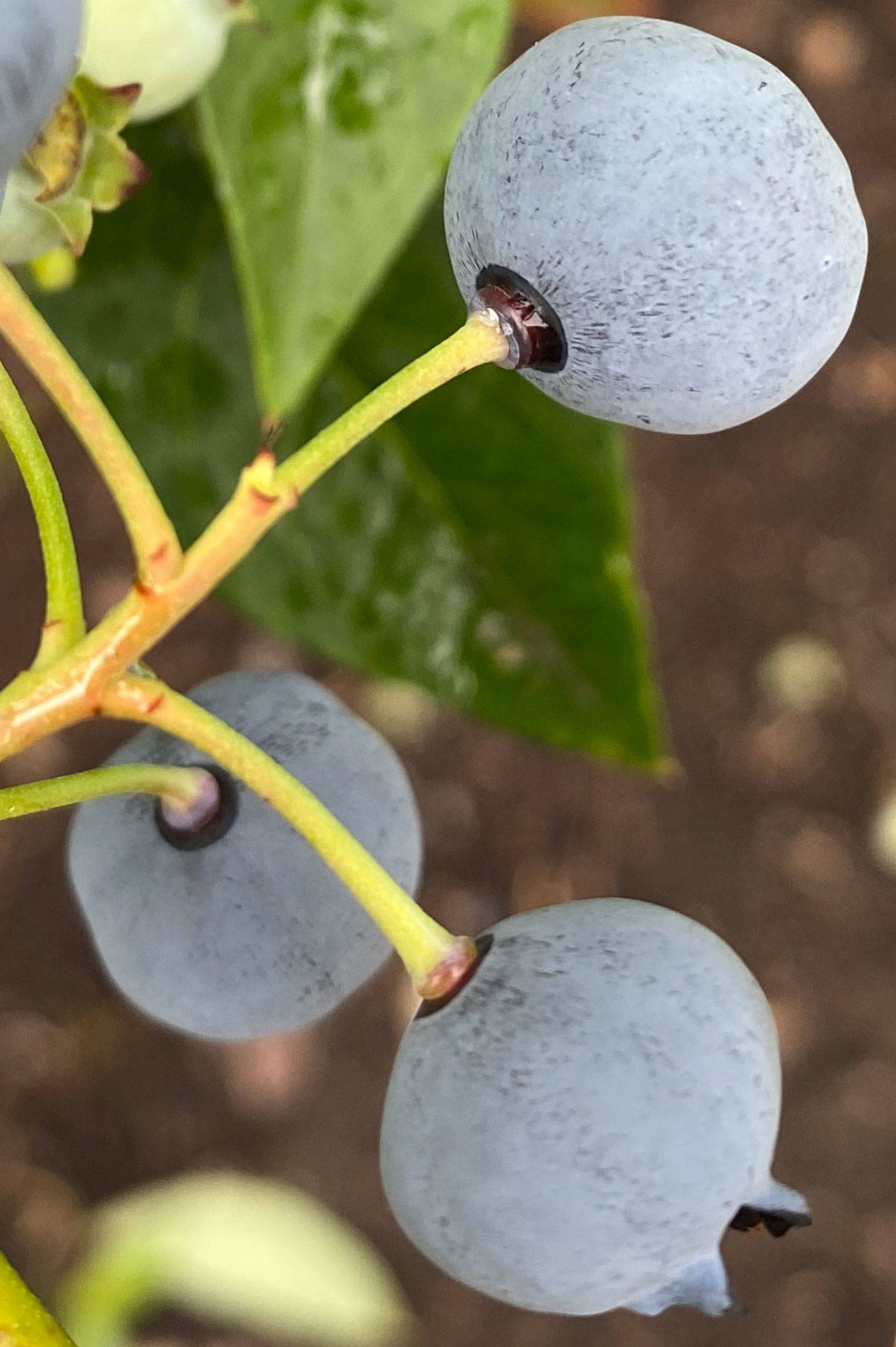What makes a berry taste good? Although taste is personal, understanding the components of taste and what you like will allow you to grow berries that your family will adore.
The flavor of berries (and most other fruits) has four major components: sweetness, sourness, aromatics and bitterness.
Sweetness arises from the breakdown of starches in the berries to simple sugars (e.g., glucose and fructose) that taste sweet. Starch is produced in the leaves through photosynthesis and transported to the fruit.
As the berries start to ripen, the starch breaks down more rapidly. Sunny weather and warm temperatures — both of which increase the rate of photosynthesis — and harvesting when fully ripened result in sweeter berries.
Sourness, sometimes referred to as tartness, is due to the presence of acids in the berries. The type of acid depends on the fruit, but is usually citric or malic acid.
As fruit begins to ripen, acid levels fall, so an unripe berry is likely to be sourer than a ripe one.
Aromatic (volatile) compounds are what give a berry its unique taste. The compounds are complex and determined by the berry type and variety. As fruit begins to ripen, production of aromatic compounds increases, giving a ripe fruit its pleasant aroma and adding to the flavor.
Bitterness is due to a number of different chemical compounds. It is an uncommon problem with berries except some blackberries. Berries with certain diseases also develop a bitter flavor such as leather rot in strawberries.
Bitterness in blackberries tends to increase in hot weather; it decreases as the berries ripen and after a heavy rain (which dilutes the bitter compounds as the berries take on more water).
The best balance of sweetness, sourness, aromatics, and bitterness is a matter of taste (so to speak). For example, some gardeners prefer berries that are more acidic (tart), while others enjoy sweeter berries. Some value the complexity of the aromatics or are extremely sensitive to even the slightest hint of bitterness.
Action plan
So what can you do to avoid blah-berries — or berries that don’t taste good to you?
First and foremost, select a berry type and cultivar that is recommended for your microclimate and matches your taste preferences. If a variety does not have the genetics to produce the taste you like (e.g., high levels of aromatics or starch), there is nothing you as a gardener can do to make it produce fruit more to your liking.
Plant all berries in full sun for a minimum of 6 hours of direct sunlight a day. Sun exposure is needed for photosynthesis —and the production of starches — and strongly influences aromatic composition.
You can’t control the weather or prevent cloudy days, but you can select a site that maximizes the amount of sun your berries receive.
Provide the care your berries need. A plant must be healthy to produce quality berries and each major berry type has different growth requirements. Become familiar with the berries you are growing so that you can give them what they need.
Provide adequate water or the berries will shrivel. Overwatering close to harvest, however, can result in berries with less flavor. Most berry plants need 1-2 inches of water a week with higher amounts after they put on fruit.
Thin and prune plants to improve plant health but also to limit berry production. Too many berries on a bush or vine usually result in berries with no taste. This is particularly true of raspberries, blackberries and blueberries which must be pruned to balance leaf mass and berry load.
Watch out for pests. Pests threaten the health of the plant, affecting overall fruit quality. Furthermore, certain pests can make the berries taste bad. Take steps to prevent and minimize damage due to pests.
Timing is everything
Harvest berries when they are at their peak of ripeness; no berries get sweeter after they are picked.
How do you know when a berry is ready for harvest? Berry surface color is not a reliable indicator.
• Strawberries are at their best when the color penetrates the berry interior.
• Raspberries are ready when they achieve full color and separate easily from the stem (receptacle).
• Blackberries should be full color and soft. They often become a duller black (lose their shininess) as they ripen.
• Blueberries should be plump, fully colored (no “red shoulders”) and separate easily from the bush. They actually reach maximal flavor a few days after losing their red shoulders.
Pick berries early in the morning and cool them quickly after harvest to keep them fresh. Store the berries, unwashed, in the refrigerator (about 32 degrees) in a covered container to prevent moisture loss. After harvest, enzymes in the berries start breaking down berry nutrients including the aromatics. Cooling slows this process.
Wash berries immediately before use (or preserving). Use refrigerated strawberries within 3-5 days, raspberries and blackberries within 2-3 days, and blueberries within 1-2 weeks.
Use frozen berries within a year for best quality.
If you harvest/purchase berries that have a bland flavor, or are lacking in the taste you prefer, all is not lost (see sidebar).
Combining berries with sugar and other ingredients can improve the flavor and heating can break down bitter flavors.
Jeanette Stehr-Green is a WSU-certified Clallam County Master Gardener and berry enthusiast.


